- Home
- Prelims
- Mains
- Current Affairs
- Study Materials
- Test Series
27th Nov 2021
GERMANY ANNOUNCES EURO 1.2 BN TO AID INDIA'S FIGHT AGAINST CLIMATE CHANGE
Recently, Germany has announced a new development commitment of over € 1.2 billion to support India’s fight against climate change and to cooperate on clean energy.
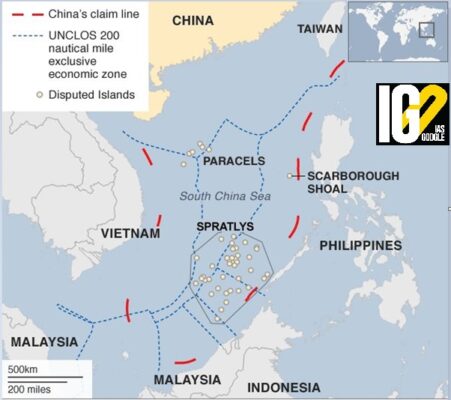
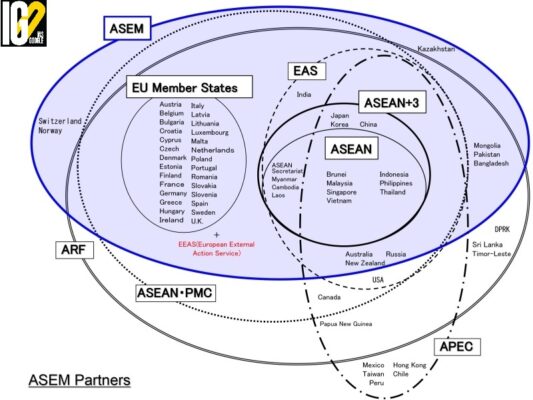

 Lithium
Lithium
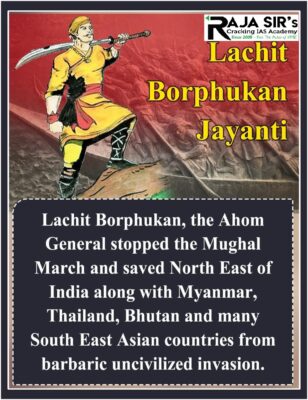
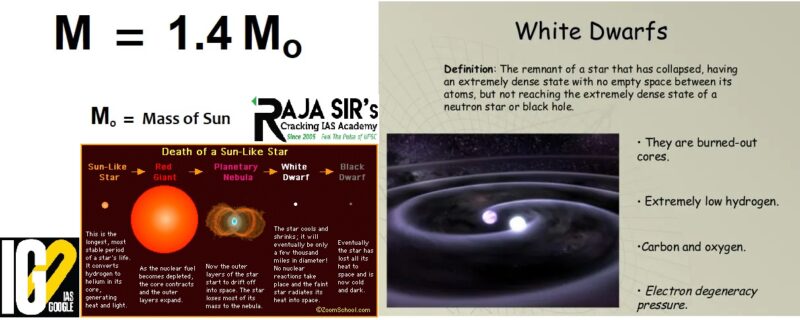 White Dwarf:
White Dwarf:
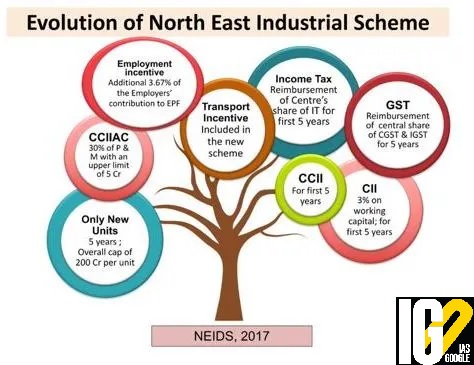

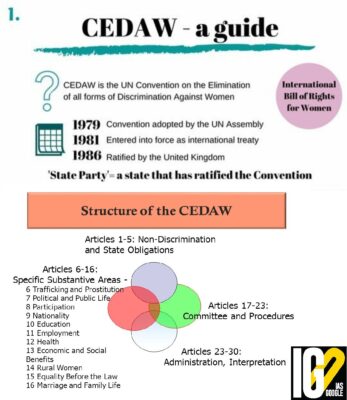
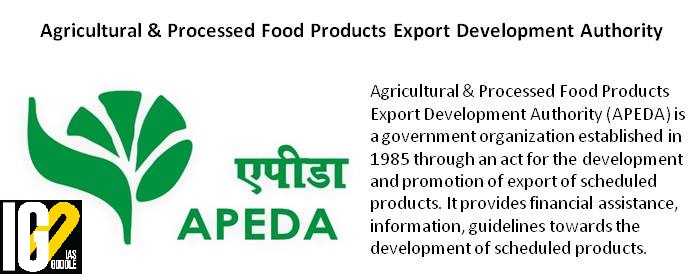
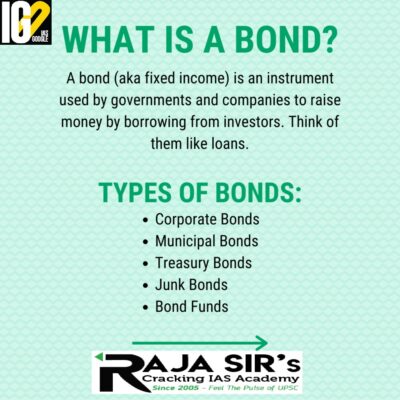
 What is a Bond?
What is a Bond?
 Highlights:
India will continue to impose the levy by March 31, 2024, or till the implementation of Pillar 1 of the OECD agreement on taxing cross-border digital transactions.
Benefits:
Highlights:
India will continue to impose the levy by March 31, 2024, or till the implementation of Pillar 1 of the OECD agreement on taxing cross-border digital transactions.
Benefits:
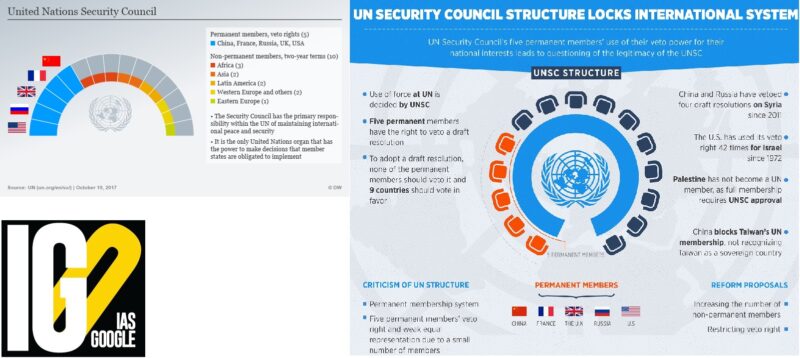 United Nations Security Council (UNSC):
United Nations Security Council (UNSC):

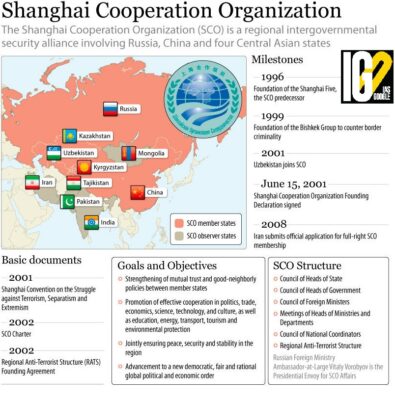 Shanghai Cooperation Organization (SCO)
Shanghai Cooperation Organization (SCO)
 INTERPOL
INTERPOL
 Attorney-General for India
Attorney-General for India
 Van Dhan Scheme:
Van Dhan Scheme:
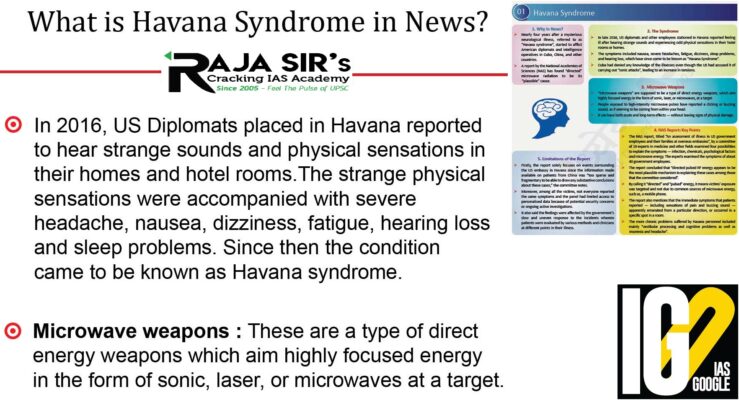 Havana syndrome
Havana syndrome
- The Intergovernmental Panel on Climate Change (IPCC) released earlier this year found that both India and Germany will suffer more extreme events due to climate change.
- Both countries together account for nearly 9 % of global greenhouse gas.
- Bilateral relations between India and Germany are founded on common democratic principles.
- India was amongst the first countries to establish diplomatic ties with the Federal Republic of Germany after the Second World War.
- India and Germany have a “Strategic Partnership” since 2001.
- Inter-Governmental Consultations (IGC) was set up in 2011 at the level of Head of Governments (German Chancellor and PM).
- Aim: To address existing and emerging challenges to international security, global economic stability and growth.
- IGC allows for a comprehensive review of Cooperation and identification of new areas of engagement.
- Germany is India’s largest trading partner in Europe.
- Germany is also the sixth most important trading partner
- The volume of trade between the two countries has increased rapidly, ever since India opened up its economy in 1991.
- Development Cooperation: Germany’s development cooperation with India remains a major component of bilateral relations and it focuses on the following areas:
- energy and energy efficiency,
- sustainable urban development and environmental and resource protection.
- It supports the economic participation of women and the setting up of a practice-oriented (dual) vocational training system
- It provides stimulus for innovative approaches, e.g., in social policy or promoting start-ups.
- Financial assistance from Germany is mainly as soft loan, composite loans or grants routed through German Government’s Development Bank.
- German investments in India: Germany is the 7th largest FDI source for India.
- There are more than 213 Indian companies operating in Germany, and are involved in Trading, manufacturing, R&D and innovation, and services.
- Indian companies have invested in Germany mainly through Mergers and Acquisitions (M&A).
- Security Cooperation: There are dialogue mechanisms on various aspects of security, including Joint Working Group on Counter Terrorism.
- Institutional Cooperation Arrangements: Several institutionalized arrangements exist between India and Germany to discuss bilateral and global issues of interest namely:
- Foreign Office Consultations, High Defence Committee, Indo-German Energy Forum, Indo-German Environment Forum, S&T Committee, and Joint Working Groups in various fields, including skill development, automotive, agriculture, coal, tourism, water and waste management.
- Sister States: Some States and Cities of India and Germany have entered into twinning arrangements.
- For example, Karnataka and Bavaria have Sister States arrangement since 2007. Mumbai and Stuttgart are sister cities since 1968.
- In January 2015, Maharashtra and Baden-Wurttemberg signed an MoU to establish a Sister State relationship.
- Defence Cooperation: India-Germany Defence Cooperation Agreement (2006) provides a framework for bilateral defence cooperation.
- The defence dialogue mechanisms include High Defence Committee meetings at the level of Defence Secretaries.
- Both sides had detailed discussion on defence cooperation during the visit of German Defence Minister to India in May 2015.
- Economic & Commercial Relations: Germany is India's largest trading partner in Europe and it facilitates in trade activities.
- A Fast-Track System for German companies has been operating in Department for Promotion of Industry and Internal Trade (DPIIT).
- India and Germany signed a Joint Statement to set up a Fast-Track system for Indian Companies in Germany.
- Science & Technology: Indo-German Science & Technology cooperation started with the signing of the Intergovernmental S&T Cooperation Agreement in 1971 and 1974.
- Culture: India and Germany have a long tradition of academic and cultural exchange.
- Max Mueller was the first scholar of Indo-European languages to translate and publish the Upanishads and the Rigveda.
- Inter-Governmental Consultations (IGC) was set up in 2011 at the level of Head of Governments (German Chancellor and PM).

- The South China Sea is a marginal sea of the Western Pacific Ocean.
- It is bounded in the north by the shores of South China, in the west by the Indochinese Peninsula, in the east by the islands of Taiwan and north-western Philippines and in the south by Borneo and eastern Sumatra islands.
- It is connected with the;
- East China Sea via the Taiwan Strait
- Philippine Sea via the Luzon Strait
- Sulu Sea via the straits around Palawan
- Strait of Malacca via the Strait of Singapore
- South China Sea has an extensive array of geo-political, economic and military significance.
- It hosts shipping routes, fish stock, hydrocarbon reserves, and rich biodiversity.
- One-third of the world's maritime shipping passes through it, carrying over US$3 trillion in trade each year.
- Huge oil and natural gas reserves lie beneath its seabed.
- It also contains lucrative fisheries, which are crucial for the food security of millions in Southeast Asia.
- The South China Sea contains over 250 small islands, atolls, cays, shoals, reefs and sandbars many of which are naturally underwater at high tide while some are permanently submerged.
- It has three archipelagos, namely, the Spratly Islands, Paracel islands, and Pratas islands along with Macclesfield’s Bank and Scarborough Shoal.
- India, while not a South China Sea littoral state, is invested in the maintenance of the rules-based order and freedom of navigation in these sea lanes of communication.
- It intends to move away from its historical balanced approach towards China and the SCS disputes, and play a more proactive role, guided by its Act East policy.
- India engages with the region through regular naval deployments, visits and exercises in these waters, through;
- Established and growing strategic-military partnerships with the littoral states
- Involvement in oil exploitation in these waters
- Diplomatic discussions.
- India uses the SCS waterway for trade worth nearly US$200 billion every year.
- Nearly 55 percent of India’s trade with the Indo-Pacific region pass through these waters.
- India itself signed an agreement with Vietnam in October 2011 to expand and promote oil exploration in the South China Sea.
- While China has always objected to India’s oil exploration activities in the Vietnamese waters in the SCS, India reaffirmed its intent to pursue such activities.
- For India, its economic vitality rests on assured supply of energy and safe and secure trading routes in the region, including the Straits of Malacca.

- ASEM is an intergovernmental process (political dialogue forum).
- Established- 1996
- Aim- To foster dialogue and cooperation between Asia and Europe.
- Objective - To address issues of common interest in a spirit of mutual respect and equal partnership.
- 28 Member States of the European Union + Norway and Switzerland.
- 10 ASEAN countries: Brunei, Cambodia, Indonesia, Laos, Malaysia, Myanmar, the Philippines, Singapore, Thailand, and Vietnam.
- Australia, Bangladesh, China, India, Japan, Kazakhstan, Republic of Korea, Mongolia, New Zealand, Pakistan and Russia
- 2 institutional partners: European Union and the ASEAN Secretariat.
- Informality
- An open forum for officials to discuss political, economic and socio-cultural.
- Multi-Dimensionality
- Covering the full spectrum of relations.
- To devote equal weight to political, economic and socio-cultural dimensions.
- Equal Partnership
- Co-operation based on mutual respect and mutual benefit
- High-Level & People-to-People
- A platform to increase focus on fostering engagements in all sectors.
- It is a virtual biennial meeting.
- Members- Members of European Union, ASEAN Member States, China, Japan, Korea and European Commission.
- Aim- to strengthen social, cultural and educational links between Asia and Europe.
- Theme- "Strengthening Multilateralism for Shared Growth".
- Host- Cambodia
- India participated in 7th ASEM summit 2008 for the first time.

 Lithium
Lithium
- Lithium is a chemical element with the symbol Li and atomic number 3.
- It is a soft, silvery-white alkali metal.
- It is highly reactive and flammable and must be stored in a vacuum.
- It is soft enough to be cut with a knife.
- It is abundant and present in the Earth’s crust in 65 parts per million.
- To treat and prevent episodes of mania
- In the manufacturing of rechargeable batteries for mobile phones, digital cameras, and laptops.
- To create the hydrogen isotope tritium through the bombardment of neutrons.
- It is the lightest of the metals, with a density approximately half that of water.
- It has the highest specific heat of any solid element.
- It reacts with water, but not as vigorously as does sodium.
- Lithium is corrosive and requires special handling.
- It is extremely flammable.
- It is the only alkali metal that reacts with nitrogen.
- Bolivia: 21 million tonnes of Deposit.
- Argentina: 17 million Tonnes of Deposit.
- United States: 8 million tonnes of Deposit.
- Australia: 3 million tonnes of Deposit.
- China:5 million tonnes of Deposit.
- Karnataka:1,600 tonnes of Deposit
- It was India’s first ever lithium reserves, which was found in Jan. 2021.
- India must build strategic relationships with lithium-rich countries like Bolivia and Argentina.
- India should acquire lithium mines or take an equity stake in some of the existing lithium miners to ensure a smooth supply.
- India should promote research and development in solid-state batteries and hydrogen cells.

- Lachit Borphukan was born in early seventeenth century to Momai Tamuli, who was the first Borbarua under the Ahom King Prataap Singha.
- Borbaruais the Governor of upper Assam and Commander-in-Chief of the Ahom army.
- He was given positions of responsibility of the scarf-bearer (Soladhara Barua) of the Ahom Swargadeo.
- It was a position equivalent to a Private Secretaryship, which was regarded as the first step in career of an ambitious diplomat and politician.
- The Ahom kingdom was ruled by a king, called Swargadeo, who had to be a descendant of the first king Sukaphaa.
- He was a commander and Borphukan in the Ahom kingdom.
- In the Ahom system of governance, Borphukan was one of the five patra mantris (councillors) who possessed both executive and judicial powers.
- The Ahom kingdom was a late medieval kingdom in the Brahmaputra Valley in Assam.
- It maintained its sovereignty for nearly 600 years.
- He was known for his strategies which resisted Mughal expansion into the kingdoms of Assam.
- He is best known for his leadership in the 1671 Battle of Saraighat and defeated the Mughal forces under the command of Ramsingh I.
- Later, King Chakradhwaj Singha selected Lachit Borphukan to lead the army in the campaign against the Mughals who held Guwahati.
- He died about a year later due to illness.
- The Battle of Saraighat was a naval battle fought in 1671 between the Mughal Empire and the Ahom Kingdom on the Brahmaputra River at Saraighat, now in Guwahati.
- The Mughal army was led by the Kachwaha king, Raja Ram Singh I and the Ahom Kingdom was led by Lachit Borphukan.
- The Ahom Army defeated the Mughal Army by brilliant uses of the terrain, clever diplomatic negotiations to buy time, guerrilla tactics, psychological warfare, military intelligence.
- The Ahom kingdom had a strong navy, which eventually led them to win the battle.
- The Battle of Saraighat was the last battle in the last major attempt by the Mughals to extend their empire into Assam.
- Borphukan is known for his brilliant valour which restricted the British expansion into the state of Assam.
 White Dwarf:
White Dwarf:
- They are the stars that have burned up all of the hydrogen they once used as nuclear fuel.
- They are also known as degenerate dwarf.
- The name was coined by Willem Luyten in 1922.
- The nearest known white dwarf is Sirius B.
- It is part of a binary star system.
- The mass is comparable to the Sun, while its volume is comparable to Earth.
- The central region is composed of a mixture of carbon and oxygen.
- A thin envelope of helium is surrounded with a layer of hydrogen.
- White dwarfs are extremely dense objects with little luminosity.
- They release stored thermal energy.
- It is made up of atoms in a plasma state.
- When the nuclear fuel is exhausted, the outer layers are lost.
- It acts as a planetary nebula.
- Planetary nebulae are astronomical objects made up of gaseous materials.
- They are extended in size and fuzzy in appearance.
- They undergo a process of shrinking and cooling over millions of years.
- A white dwarf is very hot when it forms.
- It has no source of energy.
- A black dwarf is a kind of star.
- A black dwarf is made when a white dwarf star becomes too cold.
- When it is cold enough, it produces no heat and light.
- The star will get darker and become black.
- It doesn't have enough mass to create enough pressure so the remnant core is made out of carbon and oxygen.
- It is coined by the Indian Astrophysicist, Subrahmanyam Chandrasekhar.
- Chandrasekhar Limit is the maximum mass possible for a stable white dwarf star.
- A limit which mandates that no white dwarf (a collapsed, degenerate star) can be more massive than about 1.4 times the mass of the Sun.
- Capital Punishment is also known as a death penalty.
- It is the execution of an offender sentenced to death after conviction of a criminal offence by a court of law.
- It is punishable by death in accordance with Section 302 of the Indian Penal Code, 1860
- Use of any special category of explosive that could endanger life or cause serious damage to property is punishable by death penalty.
- A person who inflicts injury in a sexual assault which results in death, may be punished under the Criminal Law Act, 2013.
- Gang rapes are punishable with death penalties.
- According to Section 364-A of Indian Penal Code, 1860, kidnapping not resulting in death is an offence punishable by death.
- If a person convicted of an attempt to commit any drug trafficking offences, or financing of narcotic and psychotropic substances, he or she can be sentenced to death.
- The death penalty is given to any person who is waging or trying to wage war against the government and helping the defence forces to commit a mutiny.
- Abetment of assault, mutiny of a defence personnel from his duty is punishable by death if committed by a member of the Army or Navy or Air Force.
- Minor
- A minor who is under the age of 18 at the time of committing a crime is not executed.
- Pregnant Women
- Clemency must be granted to a pregnant woman sentenced to death.
- Intellectually Disabled
- A person while committing a crime who is mentally ill or unable to understand the nature of the act then the person can be held liable under the law and can be punished with the death penalty.
- It guarantees the right to life and personal freedom to all, including the right to live with human dignity.
- Only in rare cases, the death penalty should be used.
- Only on special grounds, the death penalty can be sentenced and should be treated as exceptional punishment.
- In the light of individual circumstances, the sentence should be
- The death penalty shall be confirmed by the High Court.
- Under Article 136of the Constitution and under Section 379 of the C.R.P.C there is a right to appeal to the Supreme Court.
- The accused may pray for forgiveness, commutation, etc. of sentence under Sections 433 and 434 of the C.R.P.C. and to the President or the Governors under Articles 72 and 161.
- In accordance with Articles 21 and 22, the accused has the right to a prompt and fair trial.
- The accused is not entitled to be tortured under Article 21 and 22.
- Under Articles 21 and 19, the accused has freedom of speech and expression under custody.
- Every guilty person should be punished and the punishment shall be proportional to the crime that he/she has committed.
- This argument supports the concept of justice.
- Since society aims to reduce heinous crimes, the strongest punishment shall be awarded and death penalty is suitable for it.
- Offenders must be killed to prevent them from committing a crime again.
- It is considered as good to kill a man who is dangerous to the community and execution can be treated as a remedy to safeguard the interest of the society.
- There is no proof that death penalty has taken lives of innocent people hence, it should not be considered as discriminatory in nature.
- People presume that even the offenders in their worst case should not be deprived of their right to life.
- It is the obligation of the State to protect the society and punish the wrongdoers but it should be done in a least harmful way.
- The death penalty leads to execution of innocent people because of the deficiency in the system of justice.
- People believe that death penalty based on retribution to provide justice is morally wrong and is just an emerged form of vengeance.
- They argue that capital punishment is against it as sentencing life imprisonment to an offender can cause an endless pain to the offender.
- Death penalty only leads to brutalization of the society as well as the state's relation with its citizens.
- The current society does not endure torture and death penalty is not the solution to deal with dreadful crimes.
- An office of profit means a position that brings to the person holding it some financial gain, or advantage, or benefit.
- It may be an office or place of profit if it carries some remuneration, financial advantage, benefit etc.
- The origin of this term can be found in the English Act of Settlement, 1701.
- Under this law, no person who has an office or place of profit under the King, or receives a pension from the Crown, shall be capable of serving as a member of the House of Commons.
- To present no conflict between the duties and interests of an elected member.
- To enforce a basic feature of the Constitution- the principle of separation of power between the legislature and the executive.
- It bars any Member of Parliament or Member of Legislative Assembly from holding an office that would give its occupant the opportunity to gain a financial advantage or benefit.
- It refers to a post under central/state government which yields salaries, perks and other benefits.
- Under the Representation of People Act too, holding an office of profit is grounds for disqualification.
- The law does not clearly define what constitutes an office of profit but the definition has evolved over the years with interpretations made in various court judgments.
- In 1964, the Supreme Court ruled that the test for determining whether a person holds an office of profit is the test of appointment.
- Several factors are considered in this determination including factors such as whether;
- The government is the appointing authority
- The government has the power to terminate the appointment
- The government determines the remuneration
- The power that comes with the position.
- The source of remuneration is justified

- Launched: 2017 during Five Years Plan
- Aim: To promote sustainable industrializations and employment generation in North East regions states.
- Nodal Agency: North East Industrial Development Financial Corporation Ltd. (NEDFi)
- It is a scheme that covers eligible industrial units in the manufacturing and service sectors.
- Objective:
- To accelerate economic growth and boost in the process of industrialization in the North-Eastern Region of India.
- To enhance employment in the North East regions
- To give preference to eligible industrial units under the Micro, Small and Medium Enterprises (MSME).
- Central Capital Investment Incentive for the Access to Credit (CCIIAC)-
- 30% investment in Plant & Machinery with the upper limit of 5 crore.
- Central Interest Incentive (CII)-
- It provides 3% Working Capital Credit by the eligible Banks or Financial institutions for the first 5 years.
- Central Comprehensive Insurance Incentive (CCII)-
- 100% Reimbursement of insurance premium on Plant & Machinery for the period of 5 years.
- Goods and Service Tax (GST) Reimbursement-
- The reimbursement that will be up to the extent of Central Government share of CGST and IGST for the period of 5 Years.
- Income Tax (IT) Reimbursement-
- It is provided for the period of first 5 years.
- Transport Incentive (TI)-
- Up to 20%of the cost of transportation provided by railways for movement of finished goods.
- 20%cost of transportation through Inland Waterways Authority of India.
- 33%cost of transportation of air by scheduled airlines and Non-Scheduled Operator Permit (NSOP) holders
- Employment Incentive (EI)-
- Centre provides 67%of the employer’s contribution to the Employees’ Provident Fund (EPF).
- 33% Employee Pension Scheme grant of the employer in the scheme of Pradhan Mantri Rojgar Protsahan Yojana (PMRPY).
- Aim:
- To provide the member cities with a platform to discuss and exchange information on aspects that are vital for sustainable management of urban rivers.
- To work towards adopting and localizing national policies and instruments with key river-related directions, prepare their Urban River Management Plans.
- Governing Body:
- Ministry of Jal Shakti and Ministry of Housing and Urban Affairs
- Theme of Alliance:
- The Alliance will focus on three broad themes are Networking, Capacity Building, and Technical Support.
- Cities that re part of Alliance: Kanpur, Prayagraj, Dehradun, Haridwar, Rishikesh, Srinagar, Begusarai, Bhagalpur, Munger, Patna, Berhampore, Hooghly-Chinsurah, Howrah, Jangipur, Maheshtala, Rajmahal, Sahibganj, Ayodhya, Bijnor, Farrukhabad, Mathura-Vrindavan, Mirzapur, Varanasi, Aurangabad, Chennai, Bhubaneswar, Hyderabad, Pune, Udaipur, and Vijayawada.
- Significance of the Alliance
- It will make sure that cities should be responsible for rejuvenating their rivers.
- It will look after the National Mission for Clean Ganga (NMCG)and National Institute for Urban Affairs (NIUA).
- It will enable cities to learn from each other’s successes and failures as well as connect people with the rivers.

- Tuberculosis is a potentially serious infectious disease that mainly affects the lungs.
- Caused by: Mycobacterium tuberculosis
- Mode of Spread: Spread from person to person through tiny droplets released into the air via coughs and sneezes.
- Symptoms of TB:
- Coughing for three or more weeks
- Coughing up blood or mucus
- Chest pain, or pain with breathing or coughing
- Unintentional weight loss
- Fatigue
- Fever
- Night sweats
- Chills
- Stages of TB:
- Exposure
- Latent:
- Immune system of the body keeps infectious bacteria from spreading
- Patients don’t have any symptoms, and are not contagious
- Active disease
- The germs multiply and make sick. Also, can spread the disease to others.
- 90% of active cases in adults come from a latent TB infection
- Vaccine for TB: Bacille Calmette-Guérin (BCG)
- India (41%) was on the list of countries that topped those that contributed most to the global reduction in TB notifications between 2019 and 2020.
- India along with Indonesia (14%), the Philippines (12%), China (8%), and 12 other countries accounted for 93% of the total global drop in notifications.
- The WHO estimated that some 4.1 million people currently suffer from TB.
- 1.5 million people died from TB in 2020 (including 214 000 people with HIV).
- One-third of the world’s population is infected with TB.
- TB is a leading killer of people who have HIV.
- It’s most prevalent in developing countries.
- Of the estimated 10.4 million new cases, only 6.1 million were detected and notified in 2015. This led to a gap of 4.3 million cases, undetected and untreated.
- TB occurs in every part of the world, but the majority of cases are in Asia and Africa.
- The number of people newly diagnosed with TB and those reported to national governments fell from 7.1 million in 2019 to 5.8 million in 2020.
- The ‘End TB Strategy’ milestones for reductions in TB disease burden by 2020 were a 35 percent reduction in the number of TB deaths.
- The funding in the low- and middle-income countries that account for 98% of reported TB cases remained a challenge.
- Of the total funding available in 2020, 81% came from domestic sources, with the BRICS countries (Brazil, Russian Federation, India, China, and South Africa) accounting for 65% of total domestic funding.
- Women's rights activists have recognised 25 November as the day to fight against the violence against women to respect the Mirabai sisters:
- They were the three Dominican Republic political activists, brutally killed in 1960.
- The day also marks the launch of the UNiTE to End Violence against Women
- It was established in 2008.
- Aim: To prevent and eliminate violence against women and girls around the world, calling for global action to increase awareness and promote advocacy.

- It is an international legal instrument that requires countries to eliminate discrimination against women and girls in all areas and promotes women’s and girls’ equal rights.
- It was established by the United Nations General Assembly in
- CEDAW is often described as the international bill of rights for women.
- It consists of a preamble and 30 articles.
- It defines what constitutes discrimination against women and sets up an agenda for national action to end such discrimination.
- The Committee is composed of 23 experts nominated by their governments and elected by the States parties.
- The members are selected as “individuals of high moral standing and competence in the field covered by the Convention”.
- It is one of the key international agreements that guides the work of UN Women in achieving gender equality and empowering all women and girls.
- To incorporate the principle of equality of men and women in their legal system, abolish all discriminatory laws and adopt appropriate ones prohibiting discrimination against women;
- To establish tribunals and other public institutions to ensure the effective protection of women against discrimination;
- To ensure elimination of all acts of discrimination against women by persons, organizations or enterprises.
- It ensures women's participation in political and public life including the right to vote and to stand for election.
- It affirms the reproductive rights of women and targets culture and tradition as influential forces shaping gender roles and family relations
- The Act was enacted for effective deterrence against sexual offences.
- The Criminal Law (Amendment) Act, 2018, was enacted to prescribe stringent penal provisions including death penalty for rape of a girl below the age of 12 years.
- The Act also inter-alia mandates completion of investigation and trials within 2 months each.
- It provides a pan-India, single, internationally recognized number (112)-based system for all emergencies.
- It aids speedy redressal mechanism with the computer-aided dispatch of field resources to the location of distress.
- Safe City Projects have been sanctioned in the first Phase in 8 cities (Ahmedabad, Bengaluru, Chennai, Delhi, Hyderabad, Kolkata, Lucknow and Mumbai).
- The Ministry of Home Affairs has launched a cybercrime portal for citizens to report obscene content.
- It has also launched National Database on Sexual Offenders (NDSO)
- Aim: To facilitate investigation and tracking of sexual offenders across the country by law enforcement agencies.
- MHA launched an online analytic tool for police called Investigation Tracking System for Sexual Offences, to facilitate States and Union Territories.
- Aim: To monitor and track time-bound investigation in sexual assault cases in accordance with the Criminal Law (Amendment) Act 2018.
- One Stop Centre (OSC) Scheme has been implemented across the country.
- It is exclusively designed to provide integrated services such as medical aid, police assistance, legal counselling/ court case management, psycho-social counselling and temporary shelter to women affected by violence under one roof.
- 728 OSCs have been approved by the Government of India, 595 OSCs are operational in the country.
- Steps have been taken to strengthen DNA analysis units in Central and State Forensic Science Laboratories.
- The EU Committee on Organic Production derecognized five CBs, for their failure to meet the norms for ethylene oxide (ETO) present in organic consignments imported into EU.

- APEDA is a government organisation established in 1985.
- It provides financial assistance, guidelines towards the development of scheduled products.
- The products specified under the APEDA ACT are called schedule products and exporters of such products are required to register under APEDA.
- Aim: To promote schedule products export.
- Promotion of export-oriented production and development of the Scheduled products.
- Setting the standards and specifications for the scheduled products.
- Registration of exporters of the scheduled products on payment of required fees.
- Improving packaging and marketing of the Scheduled products.
- Inspection of products for the purpose of ensuring the quality of such products.
- Development of industries relating to the scheduled products and undertaking surveys, feasibility studies etc.
- Collection of statistics from the owners of establishments and publication of such statistics.
- Union Minister will confer National Gopal Ratna Awards.
- It is a part of National Livestock mission.
- Established- 2014
- Aim: To improve the milk production and productivity in a scientific manner.
- It is a focussed project under National Programme for Bovine Breeding and Dairy Development.
- Development and conservation of indigenous breeds
- Breed improvement programme for indigenous cattle breeds to improve their genetic makeup and increase the stock;
- Enhancement of milk production and productivity;
- Upgradation of nondescript cattle using elite indigenous breeds
- Distribution of disease free high genetic merit bulls for natural service.
- Awards for encouraging farmers societies:
- Gopal Ratna awards:
- For maintaining the best herd of Indigenous Breed(s)
- For practicing best management practices.
- Categories:
- Best Dairy farmer rearing indigenous cattle breeds
- Best Artificial Insemination Technician (AIT)
- Best Dairy Cooperative/ Milk producer Company/ Dairy Farmer Producer Organisation
- Categories:
- For Best managed Indigenous Herd by Institutions/Breeders’ Societies.
- Gokul Gram:
- The RGM envisages establishment of integrated cattle development centres.
- Aim: to develop indigenous breeds including up to 40% nondescript breeds.
- Objectives:
- To promote indigenous cattle rearing and conservation in a scientific manner.
- To propagate high genetic merit bulls of indigenous breeds.
- To optimize modern Farm Management practices and promote Common Resource Management.
- To utilize animal waste in economical way.
- Objectives:
- Conservation, promotion and development of 41 species of cattle and 13 species of animals.
- 1000 High Genetic Merit Indigenous animals will be maintained.
- Machinery for making modern semen centers, veterinary clinics, Biogas plants,
- Arrangements of balanced diet, gumutra and dung materials will also be established.
- Arrangements for Vermi-Compost, Silage Pit, Training, Milk Processing will also be arranged.
- Special emphasis on development of extinct species.
- 25 crore each has been released to Madhya Pradesh and Andhra Pradesh for establishment of National Kamdhenu Breeding Centre.
- E-Pashu Haat- Nakul Prajnan Bazaar:
- e-market portal connecting breeders and farmers for disease free bovine germplasm
- An Animal Wellness Programme encompassing provision of Animal Health cards.
- Advanced Reproductive Technology:
- It includes Assisted Reproductive Technique- In-vitro Fertilization (IVF)/ Multiple Ovulation Embryo Transfer to improve availability of disease-free female bovines.
- National Bovine Genomic Center for Indigenous Breeds (NBGC-IB):
- It will be established for selection of breeding bulls of high genetic merit.
- He was a social entrepreneur who made dairy farming India's largest self-sustaining industry.
- He is known as Father of White Revolution and Milkman of India.
- He started Operation Flood, which is known as the world’s largest agricultural program.
- He established 30 institutions that are run by various farmers and workers.
- He has also established Amul Brand.
- Due to his efforts India became the largest producer of milk in 1998.
- He is felicitated with 15 honorary degrees and many renowned awards.

 What is a Bond?
What is a Bond?
- A bond is a fixed-income instrument that represents a loan made by an investor to a borrower.
- Bonds are used by companies, municipalities, states, and sovereign governments to finance projects and operations.
- Bonds have maturity dates at which point the principal amount must be paid back in full or risk default.
- It also includes the terms for variable or fixed interest payments made by the borrower.
- Bond prices are inversely correlated with interest rates
- when rates go up, bond prices fall and vice-versa.
- Corporate bonds are debt securities issued by private and public corporations.
- These bonds are characterized by higher yields because there is a higher risk of a company defaulting than a government.
- Investment-grade: These bonds have a higher credit rating, implying less credit risk, than high-yield corporate bonds.
- High-yield bonds have a lower credit rating, implying higher credit risk, than investment-grade bonds and, therefore, offer higher interest rates in return for the increased risk.
- Municipal bonds, called “munis,” are debt securities issued by states, cities, counties and other government entities.
- S. Treasuries are issued by the U.S. Department of the Treasury on behalf of the federal government.
- Bonds can provide a means of preserving capital and earning a predictable return.
- Bond investments provide steady streams of income from interest payments prior to maturity.
- The interest from municipal bonds generally is exempt from federal income tax and also may be exempt from state and local taxes for residents in the states where the bond is issued.
- Credit risk. The issuer may fail to timely make interest or principal payments and thus default on its bonds.
- Inflation risk. Inflation reduces purchasing power, which is a risk for investors receiving a fixed rate of interest.
- Liquidity risk. This refers to the risk that investors won’t find a market for the bond, potentially preventing them from buying or selling when they want.
- Call risk. The possibility that a bond issuer retires a bond before its maturity date, something an issuer might do if interest rates decline, much like a homeowner might refinance a mortgage to benefit from lower interest rates.
- Additional Tier-1 bonds, are a type of unsecured, perpetual bonds that banks are allowed to issue to meet their long-term capital requirement.
- RBI is the regulator for these bonds.
- AT-1 bonds pay a slightly higher rate of interest.
- They are listed and traded on the exchanges.
- The bonds carry no maturity date.
- However, the bonds have call options that allow banks to redeem them after five or 10 years.
- This way the issuing banks can give an exit option to AT1 bond holders.
- Banks can skip interest pay-outs for a particular year or even reduce the bonds’ face value, provided their capital ratio falls below a certain threshold level.
- RBI can ask a bank to cancel its outstanding AT-1 bonds without consulting its investors.
- This is possible when the RBI feels that a bank is tottering on the brink and needs a rescue.
 Highlights:
India will continue to impose the levy by March 31, 2024, or till the implementation of Pillar 1 of the OECD agreement on taxing cross-border digital transactions.
Benefits:
Highlights:
India will continue to impose the levy by March 31, 2024, or till the implementation of Pillar 1 of the OECD agreement on taxing cross-border digital transactions.
Benefits:
- US will terminate the additional duties on goods of India that had been adopted in the DST Section 301 investigation.
- It proposed 25 per cent retaliatory tariffs on 40 products including shrimps, wooden furniture, gold, silver and Jewellery items and basmati rice.
- Once the OECD agreement rolls out, the 2% equalisation levy will be withdrawn.
- In June 2021, US suspended retaliatory tariff imposition on six countries, including India, for a period up to 180 days.
- Aim: To provide time for negotiations at the OECD and G20 on international taxation.
- On October 8, 2021, India and US joined an agreement with 134 other members of the OECD/G20 Inclusive Framework on a two-pillar solution to address the tax challenges arising from the digitalisation of the economy.
- It will ensure a fairer distribution of profits and taxing rights among countries with respect to the largest Multinational Enterprises including digital companies.
- Example: Microsoft, Google, Facebook, and Netflix.
- It would re-allocate taxing rights over MNEs from their home countries to the markets where they have business activities and earn profits.
- The taxing rights on more than USD 125 billion of profit will be reallocated to market jurisdictions each year.
- It seeks to put a floor on competition over corporate income tax, through the introduction of a global minimum tax rate that countries can use to protect their tax bases.
- The global minimum tax with a minimum rate of 15% - is estimated to generate around USD 150 billion annually.
- Additional benefits will arise from increased tax certainty for taxpayers and tax administrations.
- Equalisation Levy was introduced in India in 2016 at rate of 6%.
- Aim: Taxing the digital transactions accruing to foreign e-commerce companies from India.
- The services covered are:
- Online advertisement
- Any provision for digital advertising facility/ service for the purpose of online advertisement.
- As per the amendments in Finance Act, 2020, non-resident e-commerce operators that are involved in supply of services are charged with 2% of levy from April 1, 2020.
- The payment should be made to a non-resident service provider.
- The annual payment made to service provider exceeds Rs. 1,00,000 in one financial year.
- Interest is charged at 1% for every month or part thereof is delayed.
- Equalisation Levy not deducted: Penalty equal to the amount of levy failed to be deducted along with interest of the principal levy outstanding.
- Equalisation Levy deducted but not deposited: Penalty equal to INR 1,000/day subject to the maximum of the levy failed to be deducted.
- INR 100/day for each day the non-compliance continues.
- In case of a false statement the person may be subject to imprisonment of a term of up to 3 years and a fine.
 United Nations Security Council (UNSC):
United Nations Security Council (UNSC):
- The United Nations Security Council is United Nation’s principal organ for peacekeeping and conflict management.
- The council consists of 15-member group- 5permanent and 10 non-permanent.
- Permanent Members: United States, United Kingdom, China, Russia and France.
- Non-Permanent Members:
- They hold their seats on a rotating basis by geographic region.
- They are elected by the United Nations General Assembly for two-year terms starting on 1 January, with five replaced each year.
- The decisions (known as resolutions) made by UNSC are binding on all member states.
- That means it has wide‑ranging powers and can, if necessary, take actions. E.g. the imposition of sanctions, that encroach on state sovereignty.
- In order for other countries to respect and implement the decisions of the council, the Council needs to have the necessary authority and legitimacy.
- The Charter of the United Nations also expressly states that countries that make considerable contributions to the UN should be members of the Security Council.
- However, only five (China, France, Russian Federation, United Kingdom, the United States) countries have veto power in UNSC.
- There is need to increase the number of permanent Council members beyond only 5 countries.
- The Council’s composition should be adapted to the new realities.
- The current composition of the Security Council reflects the geopolitical situation of
- Africa, Asia, Latin America and the Caribbean in particular do not have the representation on the Council that their current standing demands.
- The Asia-Pacific Group holds 54 Member States in the UN, with more than half of the world’s population.
- Asia is currently represented in the Council by a number equivalent to only one-fifth of the Member States (China and two non-permanent members).
- Africa also accounts for more than one-fourth of the Member States.
- However, there is no permanent seat for Africa and only three non-permanent seats.
- The Asia-Pacific Group holds 54 Member States in the UN, with more than half of the world’s population.
- In the absence of Security Council reform, there is a danger that decision‑making processes could be shifted to other forums.

- The countries that got clearance for graduation are Bangladesh, Nepal and the Lao People's Democratic Republic.
- They are low-income countries confronting severe structural impediments to sustainable development.
- They are highly vulnerable to economic and environmental shocks.
- They have low levels of human assets.
- There are currently 46 countries on the list of LDCs.
- Africa-33, Asia- 9, Caribbean-1, Pacific- 3
- The UN Committee for Development Policy review the list of LDCs every three years.
- They make recommendations on graduation and inclusion.
- Criteria- Income, Human Assets, Economic and Environmental Vulnerability
 Shanghai Cooperation Organization (SCO)
Shanghai Cooperation Organization (SCO)
- Founded on:15 June 2001
- Founders: China, Russia, Kazakhstan, Uzbekistan, Tajikistan, Kyrgyzstan
- Headquarters: Beijing, China
- Aim:
- To strengthen relations among member states
- To promote cooperation in political affairs, economics, and trade, scientific-technical, cultural, and educational spheres as well as in energy, transportation, tourism, and environmental protection.
- Members: Total 8 Member States.
- China
- Kazakhstan
- Kyrgyzstan
- Russia
- Tajikistan
- Uzbekistan
- India
- Pakistan
- It is also known as the Shanghai Pact.
- It is a Eurasian political, economic, and security alliance.
- It is the world's largest regional organization in geographic scope and population.
- It is covering three-fifths of the Eurasian continent, 40% of the world population, and more than 20% of global GDP.
- It is the successor to the Shanghai Five.
- It was a mutual security agreement formed in 1996 between China, Kazakhstan, Kyrgyzstan, Russia, and Tajikistan.
- It is governed by the Heads of State Council (HSC)
- HSC is a supreme decision-making body, which meets once a year.
- It has two permanent bodies:
- The Secretariat
- The Regional Anti-Terrorist Structure (RATS)– combats regional terrorism, separatism, and extremism.
- It will promote India’s Engagement with Central Asia
- The most visible contribution of the SCO is that at least once a year the leaders of the Central Asian countries will have to sit down with each other.
- It will help in stabilizing the relationship with Pakistan
- The regular leadership meetings around the SCO mean that both Indian and Pakistani officials at a senior level will have to encounter each other at least once a year.
- India’s principal benefit from joining the SCO will be geopolitical
- It will help bring India closer to China by supporting the only multilateral security entity outside the United Nations.
- Improving the relationship with Central Asia can be one of India’s untapped opportunities
- Indian soft power already has considerable influence in Central Asia, far more than China.
- India should work on stabilizing the relations with China and Pakistan.
- It will help India to grow at a higher rate and will maintain peace in regional areas.
- India should initiate improving the Military cooperation with SCO Countries.
- It is important to counter terrorism in the regional area.
 INTERPOL
INTERPOL
- Interpol is an inter-governmental organization that facilitates worldwide police cooperation and crime control.
- It was founded in 1923 as the International Criminal Police Commission (ICPC)
- Headquarter: in Lyon, France
- It is the world's largest international police organization with 195 member states.
- It has seven regional bureaus worldwide and a National Central Bureau in all.
- It is run by the Secretary General. it is staffed by both police and civilians.
- In each country, an INTERPOL National Central Bureau (NCB)provides the central point of contact for the General Secretariat and other NCBs.
- An NCB is run by national police officials and usually sits in the government ministry responsible for policing.
- The General Assembly is governing body and it brings all countries together once a year to take decisions.
- To ensure and promote mutual assistance between all criminal police authorities in the spirit of the Universal Declaration of Human Rights.
- To establish and develop all institutions likely to contribute effectively to the prevention and suppression of ordinary law crimes.
- To help police in all of the member countries to work together to make the world a safer place.
- All the countries are connected via a communications system called I-24/7.
- Countries use this secure network to contact each other, and the General Secretariat.
- It also allows the countries to access databases and services in real-time, from both central and remote locations.
- It also coordinates networks of police and experts in different crime areas, through working groups and at conferences to share experiences and ideas.
- An Interpol notice is an international alert circulated by Interpol to communicate information about crimes, criminals, and threats by police in a member state their counterparts around the world.
- To seek the location and arrest of a person wanted by a judicial jurisdiction or an international tribunal with a view to his/her extradition.
- The legal basis for a Red Notice is an arrest warrant or court order issued by judicial authorities in a country.
- To locate, identify or obtain information on a person of interest in a criminal investigation.
- To warn about a person’s criminal activities if that person is considered to be a possible threat to public safety.
- To locate a missing person or to identify a person unable to identify himself/ herself.
- To seek information on unidentified bodies.
- To warn of an event, a person, an objector a process representing an imminent threat and danger to persons or property.
- INTERPOL–United Nations Security Council Special Notice: To inform INTERPOL’s members that an individual or an entity is subject to UN sanctions.
-
- It was created in 2005 to provide better tools to help the Security Council carry out its mandate
- Its mandate includes the freezing of assets, travel bans and arms embargos aimed at individuals and entities associated with Al Qaeda and the Taliban.
- Purple Notice:
- To provide information on modi operandi, procedures, objects, devices or hiding places used by criminals.
- Rifles will be manufactured in India as part of a joint venture (JV) Indo-Russia Rifles Private Limited.
- The JV is established between the Indian Ordnance Factory Board (OFB) and Rosoboron export, the Russian state agency for military exports.
 Attorney-General for India
Attorney-General for India
- Appointer: President of India on the advice of the Union Cabinet.
- Constitutional Provision for Appointment: Article 76(1) of the Constitution
- Term length: As Per the President's discretion
- The Attorney General for India is the Indian government's chief legal advisor and is its principal Advocate before the Supreme Court of India.
- They must be a person qualified to be appointed as a Judge of the Supreme Court.
- They must have been a judge of some high court for five years or an advocate of some high court for ten years or an eminent jurist in the opinion of the President.
- He has the right of audience in all Courts in India as well as the right to participate in the proceedings of the Parliament, though not to vote.
- They represent the Government of India in any reference made by the President to the Supreme Court under Article 143 of the Constitution.
- However, he does not have any executive authority.
- He appears on behalf of the Government of India in all cases (including suits, appeals, and other proceedings) in the Supreme Court in which the Government of India is concerned.
- They perform other legal duties assigned to them by the President.
- National Court of Appeal is being advocated as an intermediate forum between the Supreme Court and the various high courts of India.
- The Supreme Court of India serves both as the final court of appeals and the final interpreter of the Constitution.
- It is a final court of justice in dealing with appeals from the decisions of the High Courts and tribunals within their region in civil, criminal, labor and revenue matters.
- It is proposed to have regional benches in Chennai, Mumbai, and Kolkata.
- The setting up of a National Court of Appeals would require an amendment in Article 130 of the Constitution of India.
- Need of National Court of Appeal (NCA):
- It will allow Supreme Court to function as a Constitutional court to deal with matters of national importance, fundamental rights, and issues involving a substantial question of law.
 Van Dhan Scheme:
Van Dhan Scheme:
- It is a Market Linked Tribal Entrepreneurship Development Program.
- It is an initiative targeting livelihood generation for tribal gatherers and transforming them into entrepreneurs.
- Launched-2018
- Aim -to improve tribal incomes through value addition of tribal products.
- Nodal Department- Ministry of Tribal Affairs.
- Nodal Agency-Tribal Cooperative Marketing Development Federation of India (TRIFED)
- Objective-
- To set-up tribal community-owned Van Dhan Vikas Kendra Clusters (VDVKCs) in predominantly forested tribal districts.
- To strengthen them into Tribal Producer Companies.
- It is a Mechanism for Marketing of Minor Forest Produce (MFP)
- It works through Minimum Support Price (MSP) & Development of Value Chain.
- 10 Self Help Groups (or Van dhan Kendras)of 30 Tribal gatherers is constituted.
- 15 such tribal SHGs / Van dhan Kendras, each comprising of up to 20 tribal NTFP gatherers or artisans (about 300 members) form Van Dhan Vikas Kendra Clusters (VDVKCs).
- During the year 2020-21, Govt. of India has sanction for an amount of 144.60 lakh for 10 Van Dhan Vikas Kendra.
- It is 100% Central Government Funded with TRIFED providing Rs. 15 lakhs for each 300 member Van Dhan Kendra.
- Banned in infant food
- GM shall not be used as an ingredient in infant food products.
- Labeling norms
- Proposes labeling norms for food products that contain one percent or more than one percent of GMO content.
- Specifies norms that labs will need to adhere for testing GM foods.
- Ambit of regulations: Food products that may have been made using food ingredients or processing aid derived from GMOs.
- Founded: August 2011
- The FSSAI has been established under the Food Safety and Standards Act, 2006.
- FSSAI is autonomous statutory body that is a consolidating statute related to food safety and regulation in India.
- Headquarters: New Delhi
- Aim:
- To frame science-based standards for articles of food.
- To regulate their manufacture, storage, distribution, sale, and import.
- To ensure the availability of safe and wholesome food for human consumption
- Responsibility:
- FSSAI is responsible for protecting and promoting public health through the regulation and supervision of food safety.
- Generate new knowledge that would help in continuously updating and upgrading food safety standards that are compatible with international organizations.
- Carry out evidence-based studies for improving or building Rules and regulations.
- It is also known as genetically engineered foods or bioengineered foods.
- These foods are produced from organisms that have had changes introduced into their DNA using the methods of genetic engineering.
- It allows for the introduction of new traits as well as greater control over traits when compared to previous methods, such as selective breeding and mutation breeding.
- Harmful effects of GM Foods:
- Toxicity
- Each genetic insertion creates the added possibility that formerly nontoxic elements in the food could become toxic.
- Allergic Reactions
- The genetic engineering of food creates two separate and serious health risks involving allergenicity.
- Antibiotic Resistance
- They make disease-causing bacteria resistant to current antibiotics, resulting in a significant increase in the spread of infections and diseases in the human population.
- Loss of Nutrition
- The genetic engineering of foods could result in “undesirable alteration in the level of nutrients” of such foods.
 Havana syndrome
Havana syndrome
- It is a set of medical signs and symptoms reported by US and Canadian embassy staff first in Havana, Cuba in the late 2016.
- Cases have been reported in other countries like Germany, Austria and India.
- Those reported are having symptoms like:
- Loud sounds and pain in ears
- Tinnitus, hearing loss
- Intense pressure or vibration inside head
- Difficulty with memory or concentration, Impaired balance
- Visual disturbances, nausea and unsteady gait, loss of balance, vertigo/dizziness
- Headache
- Impaired concentration and Memory loss
- Insomnia and Depression
- Possible role of Russian military intelligence behind this syndrome.
- Sonic weapons might have cause Havana syndrome
- Sonic weapons use extremely high-power sound waves to disrupt the eardrums of a person and cause severe pain or disorientation.
- Such symptoms could be unintended consequence of an energy device to collect data from smartphones or laptops.
- Symptoms could be caused by a directed, pulsed radio frequency (RF) energy device — a form of energy that includes microwaves.
- The American Senate took action by passing the bipartisan Helping American Victims Afflicted by Neurological Attacks (HAVANA) Act.
- The act provides additional financial and medical resources for American officials suffering with symptoms.









 Latest News
Latest News
 General Studies
General Studies